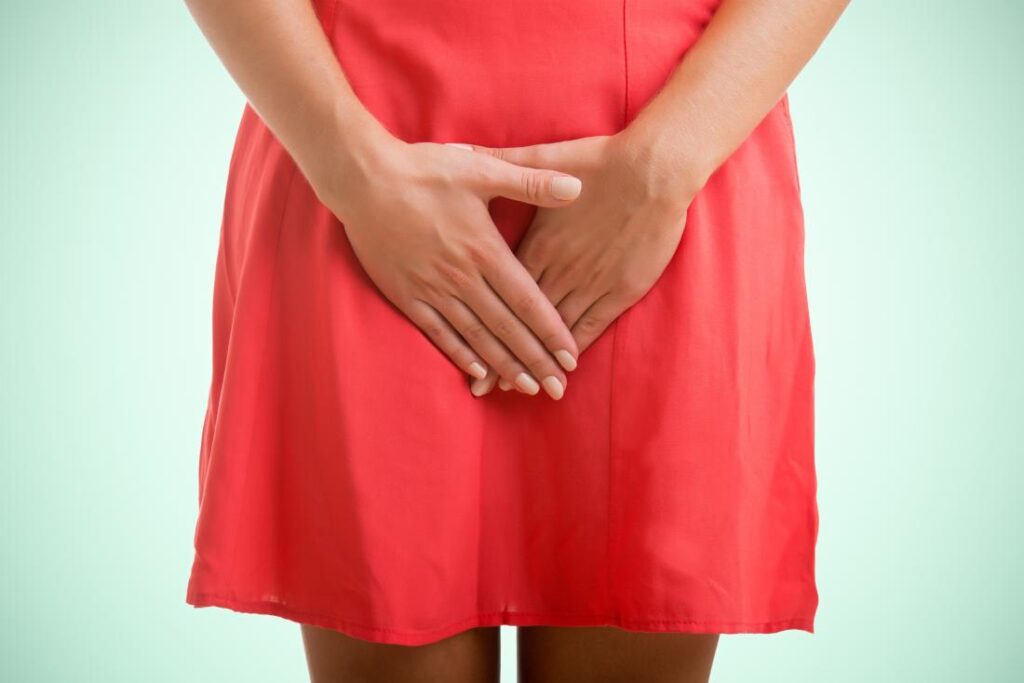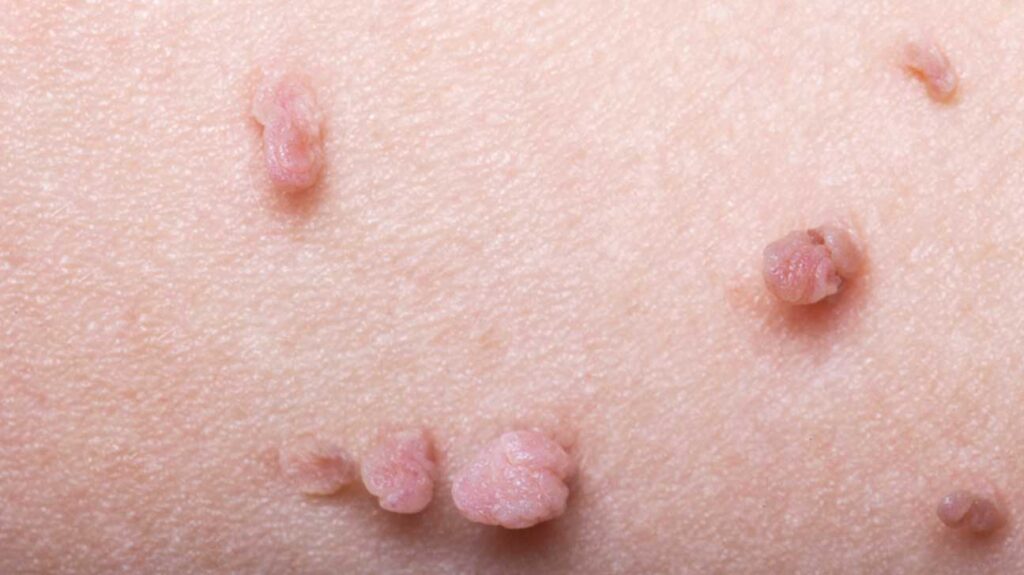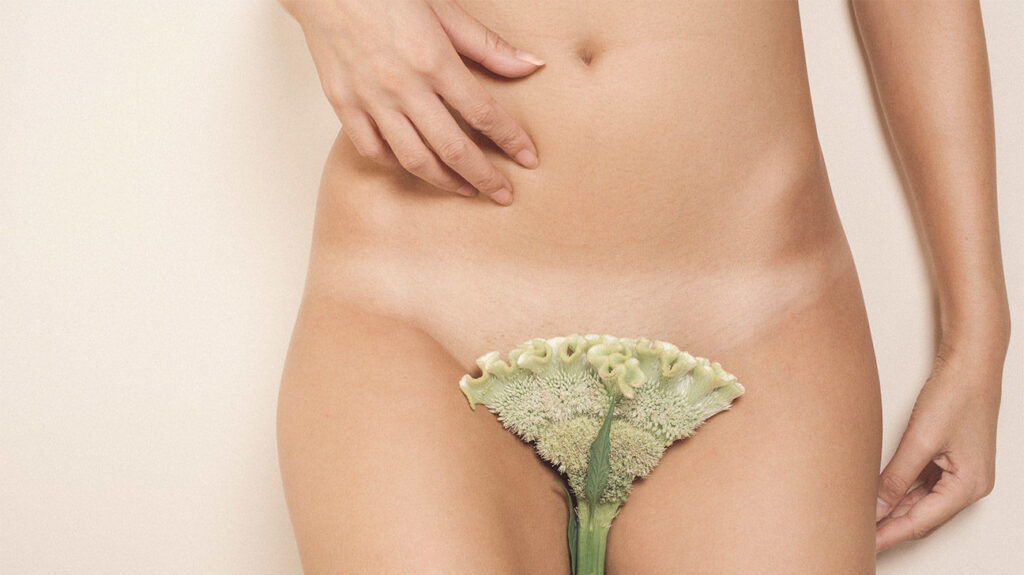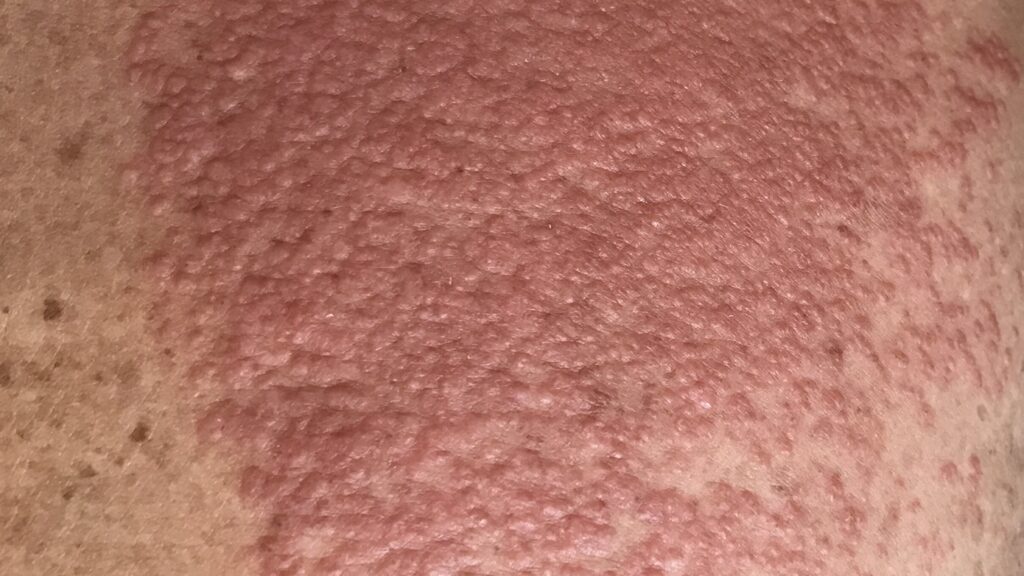Having sores on your vaginal lips is a common occurrence in women at different stages. These sores occur especially in the opening area of the vagina. While they likely are not a concern, they can still be serious depending on their cause. Here, are the causes, treatment methods and remedies for sores on vaginal lips.
What are they?
Vaginal sores are lesions or bumps that occur either inside or outside the vagina. While some may not present any symptoms, others may be itchy, tender, and painful, and may even release a discharge. These sores may be due to an STD (sexually transmitted disease) or a skin disorder.
The sores can range from pimples, blisters to bumps while their color will range from reddish to flesh color. Their sizes also differ from small blisters to whole patches of skin covered by the sore. While most vaginal sores will occur on their own, some will be accompanied by other symptoms especially when they are caused by a disease such as an STD. These symptoms vary according to the disease and may include;
- Pain at the sore
- Itchiness
- Pelvic pain
- Burning sensation
- Persistent pain
- Discomfort during sex or urination or both
- Bleeding and having pus
The best solution when you have any form of vaginal sores is to see a medical doctor for a checkup. Most people throw caution to the wind when it could be a major disease such as syphilis developing. A good number of people feel ashamed when it comes to gynecological problems without knowing that some seemingly mild problems can be signs of a bigger underlying issue.
What causes sores on vagina?

Sores on the vagina occur due to many reasons some of which include diseases and physical causes. The most likely causes include the following;
1. Herpes (HPV and HSV)
Often called genital herpes, herpes is a sexually transmitted disease whose cause is the herpes simplex virus (HSV) and it is one of the main causes of vaginal sores. The most common type of the herpes simplex virus is the herpes simplex virus type 2 (HSV 2). While herpes simplex virus type 1 (HSV 1) can also cause typical herpes, it is often the cause of fever blisters or cold sores.
A majority of the population affected by herpes do not know they have it given that is doesn’t always have symptoms or, when they occur, they are very mild in nature. Even without the symptoms of the disease, the person infected with the herpes simplex virus can still infect a healthy person through sexual intercourse.
Once a sexual partner has the herpes simplex virus, it will travel along the nervous system to the rest of the body where it will stay forever. Since it is a virus, it cannot be cured. Only proper management of the disease can be undertaken.
Once in a while, the herpes simplex virus will travel to the surface of the skin to shed more viruses and exhibit some symptoms. From the moment you are infected with the virus, you will be able to infect other people. Even when one has a condom on, you can still infect them with the virus from the exposed parts of the skin.
Some of the symptoms of herpes include the following;
- Tingling or itching feeling around your genitals or anal region.
- Red sores that may be cracked around the genitals. These sores may be cracked and raw although they lack any pain, tingling or itching feeling.
- Most patients will experience small blisters that break open to leaving behind painful sores referred to as cold sores. These blisters often occur on or around the vagina, the rectal area, and the thighs. Some patients have reported of blisters occurring in the urethra where they are very painful due to the acidity of the urine.
- Headaches
- Pain during urination
- Symptoms similar to flu (such as fever, fatigue, swollen lymph nodes).
Symptom triggers
There are situations in which the normally-dormant virus exhibits symptoms such as vaginal sores. Whenever the immune system is negatively affected, the virus will like to exhibit symptoms. This can occur during periods such as;
- Illness
- Fatigue
- Sexual intercourse
- Stress
- Menstruation
- Trauma
- Surgery
2. Yeast infection bumps

Yeast infection bumps are also major causes of vaginal sores. These are bumps that are a result of a yeast infection and they occur as a sack filled with pus or fluid. The color of the bumps is usually similar to that of the skin around them. Other times, they can be red in color. These bumps are a part of vaginal sores and they can be very painful especially when they burst.
SEE ALSO: Can women get jock itch?
Other symptoms of yeast infection
Besides vaginal sores which form due to yeast infection, other symptoms of this condition include;
- Bumps that are filled with a white fluid.
- White patches which cover the walls of the vagina.
- Some patients have white patches on the tongue. While they can be scratched off, they will soon grow back.
- Burning and painful sensation when urinating.
- A white vaginal discharge that has a cheese-like coating.
- The same white coating can be found on the roof of the mouth or the cheeks.
- The vagina will have a foul smell.
Yeast infections are the due infestation of the Candida albicans fungi. This type of fungi is often found in women even when they are healthy and not exhibiting any of the above symptoms. However, when the balance between the healthy bacteria and yeast is tilted in favor of the yeast, the symptoms are likely to occur. Some of the cases where the healthy bacteria may reduce in number compared to yeast include;
- Diabetes it reduces the ability of the body to fight off germs.
- Obesity increases the number of fluids in the body making it easy for bacteria and fungi such as yeast to grow.
- Poor hygiene since it makes it easy for the bacteria and fungi to grow.
- While some antibiotics are known to cause yeast infections, others may help in spreading the disease. Still, others may suppress the immunity of the body enough to allow the fungi to grow and spread fast.
- Oral contraceptives will increase the rate at which yeast infects you or grows as they tamper with the natural cycle of the body.
- Unprotected sex can lead to yeast infection from the infected partner to the healthy one.
- A weakened immune system such as after chemotherapy can give the yeast a chance to grow.
3. Sores on vagina after sex (friction)

Chances are high that you’ve had rough and dry sex once in your lifetime. Sex can be dry and rough if you are not well lubricated before having it. In such a case, the vagina will have a sore feeling for a while afterward. While this is not a medically serious case as it is expected to go away after a while, serious cases may require a visit to the doctor as there could be tears inside on outside your vagina.
To prevent or soothe vaginal soreness after sex, take note of the following;
- Take a warm bath as it will relax the sore area.
- Do Kegels before and after sex. These are exercises that will relax and contract your pelvic muscles to ease the soreness.
- Soak a piece of cloth in warm or cold water then compress it against the vaginal lips. It always helps do away with soreness being felt.
- Ensure you are well lubricated before the sexual encounter. If your natural lubrication is lacking, get a tube from the chemist for the same purpose.
- Use ice by applying it to the sore area so that it soothes the soreness away.
- Coconut oil can also be used by applying it to the sore area for the best results.
If the soreness persists or is too painful to withstand, pay your doctor a visit as they may recommend painkillers and antibiotics to relieve the pain and prevent an infection respectively.
4. STDs

Most sexually transmitted diseases such as herpes, syphilis, gonorrhea, chlamydia all exhibit various symptoms which include vaginal sores in various degrees. The specific diseases can be diagnosed according to the symptoms they will exhibit. A medical doctor should make a diagnosis of the specific disease in question.
Some of the major STDs are discussed below.
5. Syphilis
Syphilis is a sexually transmitted disease (STD) that is simple to treat but can have serious consequences if not treated early enough. Syphilis has four stages (primary, secondary, latent, and tertiary) each of which has different symptoms and signs.
No matter what kind of sex you have (oral, anal, vaginal), you can get syphilis if it is with an infected person. Syphilis sores can be found on the vagina, anus, rectum, mouth and the lips. An infected mother can also infect the fetus in the womb with the disease if proper care is not taken.
Symptoms of syphilis
In the primary stage, the signs and symptoms of this disease include a painless, firm and round sore on the genitals. There can be one or several vaginal sores due to this disease in its primary stage.
Secondary syphilis has symptoms such as fever, swollen lymph nodes and a skin rash. The symptoms of the primary and secondary stages of syphilis are very mild and not easy to notice.
The latent stage of syphilis does not exhibit any symptoms unlike the tertiary version of it which has the most severe symptoms of this disease. Tertiary syphilis can affect the main parts of the body including the brain and the heart. If syphilis is not treated early enough, it will develop into tertiary syphilis.
In the worst of cases, syphilis can affect the eyes (ocular syphilis) or the brain and nervous system (neurosyphilis). Ocular syphilis often results in impaired vision. In neurosyphilis, one would feel;
- Difficulty in muscle coordination
- A severe headache
- Numbness and paralysis
Syphilis can develop to the extent of killing the patient.
The best way to prevent having syphilis is having a monogamous relationship and refraining from any form of sex since even a condom is not a guarantee of safety.
6. Canker sores

Canker sores are painful sores that can occur in the mouth, gums, tongue, inside the cheeks and the vaginal area. Canker sores often occur on mucous membranes and regions that are not rooted to the born; like the genitals.
While the specific causes of canker sores are not known, there are some aspects which precipitate the breakout of canker sores in the body. They are;
- Hormonal changes especially in relation to the menstrual cycle.
- Trauma
- Smoking cessation
- Stress or anxiety
- Genetic predisposition
- Food allergies
- Some drugs especially anti-inflammatory ones and beta-blockers
- Deficiency in vitamin B12, folic acid, and iron.
7. Genital warts

Genital warts are soft growths on the genitals caused by a variant of the Human Papillomavirus (HPV). They are often itchy, painful and quite comfortable. Genital warts are a sexually transmitted disease (STD) which is quite dangerous given that some types of the HPV virus can cause cancer of the vulva and cervix.
Most women will have these sores on the vagina given that the HPV virus is one of the most common types of STIs. When you have unprotected sex and contract the Human Papillomavirus, you are likely to have these sores on and in the vagina and anus. The same vaginal pores can be observed in the cervix.
Genital warts range from a very small size invisible to the eye to quite large ones. You may also have just a single wart or several of them. After infection, it may take a few weeks for warts to develop.
8. Molluscum contagiosum

Molluscum contagiosum is a viral skin disease that is easily spread from one person to the other through contact, shared clothes and sexual intercourse.
The main sign of molluscum contagiosum bumps that have a flesh color. These bumps can occur on any part of the body. When they occur on the vagina, these sores can be very painful and uncomfortable.
While a normal case of this disease will have about 20 bumps, those with a suppressed immune system will have up to 100 of such bumps. Sores on the vagina caused by molluscum contagiosum have the following characteristics;
- It can be spread through picking and scratching on the body.
- The sores will often turn red as your immune system tries to fight off the virus.
- While some of the sores are painless, some could be itchy and painful especially those scratched or picked.
- Most bumps have a dimple in their center filed with a liquid.
- The bumps will often be of a pink or flesh color.
- The bumps start as small circles and grow with time.
9. Contact dermatitis

Contact dermatitis is an inflammation of the skin by irritants (irritant contact dermatitis) and allergens (allergic contact dermatitis). If either the irritant or allergen is activated by light, it will be termed phototoxic contact dermatitis.
One of the main signs of contact dermatitis is a red rash that spreads fast a few hours after being infected. Some patients will have hives and blisters on the body. Sores on the vagina can thus be caused by contact dermatitis.
10. Vulvovaginitis
Also called vaginitis or vulvitis, this is an inflammation of the vagina. Bacteria and yeast are some of the main causes of vulvovaginitis. Other causes include;
- Parasites
- Viruses
- Sexually transmitted diseases
- Environmental factors
- Chemical irritants
- Exposure to allergens
The general symptoms of vulvovaginitis include;
- Itching
- Irritation of the genitals
- Foul-smelling vaginal discharge
- Inflammation of the perineal and labia
- Pain during urination
- Depending on the cause of one condition, one may experience sores on the vagina.
Sores on your vagina, not herpes or STD

When you have sores on the vagina but they are not caused by herpes or an STD, it could be due to rough sex or other physical cause.
Sore bump on vaginal opening area
A single sore on the genitals can be a sign of syphilis especially if it is painless. This is often during the primary stage of the disease.
Itchy vaginal bumps and sores
There are many causes of vaginal sores and bumps that are itchy. They include;
- Atopic dermatitis
- Contact dermatitis
- Vulvovaginitis
- Genital herpes
- Genital warts
- Chancroid
- Syphilis
- Molluscum contagiosum and many others.
Treatment them
While some genital sores such as those caused by rough sex may go away on their own, some require medical intervention using medicines such as;
- Antibiotics
- Corticosteroids
- Antiviral medicines
- Hydrocortisone and other anti-inflammatory medicines
- Painkillers
Home remedies including those on the vulva, labia majora, and minora

If you are not into using drugs especially when your case isn’t serious, you can use some of the home remedies explained below. But first, a doctor has to tell you exactly what you are suffering from to know what remedy goes with the treatment.
- Baking soda; baking soda can be made into a paste then applied on the sores to offer some relief. After the paste dries, wash it off with water and keep the area clean.
- Vinegar; twice a day, add sore vinegar to your want bathwater and soak yourself in for a few minutes.
- Carrot juice; carrot juice is great for restoring your skin and the healing process. Ensure you don’t sweeten the juice.
- Sitz bath; to stop blisters from crusting over and the itch from spreading, have a sitz bath every day.
- Garlic oil; garlic oil added to the sore directly will help in the relief of the pain and itching.

